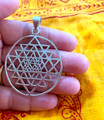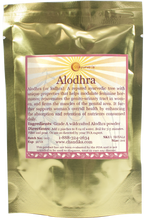 Loading... Please wait...
Loading... Please wait...Categories
- Ashwagandha
- Magnesium
- Preserves
- Turmeric
- Dosha: Pitta
- ASHOKA formulations
- Bath Pouches
- Bone Care
- Chyawanprash
- Souvenirs
- Creams
- Dosha:Vata
- Eyes, Ears, Sinus, Throat
- Face Clay
- Immune
- Dosha:Kapha
- Laundry
- Lentils
- Lip balms
- Liver & Kidneys
- Lotions
- Masalas
- Muscles & Joints
- Oral & Mouth
- Shampoo & Conditioner
- Soaps
- Spray Mists
- Pre Biotics and Probiotics
- Stress & Adrenals
- Dosha:Pitta
- GHEE
- Garcinia
- Protein For Vegans and Vegetarians
- Chutneys & Preserves
- Circulation: Physical and Vibrational
- EVERYTHING ROSE
- Lotions, Creams, & Body Mists
- Shilajit in Formulations
- Thyroid & Adrenals
- Guduchi: Transdermal, Transmucosal, & Oral
- Lotions & Body Creams
- Floral Aromas, Incense, Air Freshener, Body Mist
- Autumn Care
- Ayurvedic Pet Care
- Baby & Children
- Bath, Soaps & Deodorants
- Body Massage Oils
- Cellulite & Skin Care
- Colon Care
- Cooking, Spices, Condiments, & Oils
- DETOX
- Cough & Cold
- Digestion
- ONLINE Courses, Audio, and Printed Materials
- EMF Management
- Emotional Support & Balance
- Eye & Vision
- Fat & Sugar Metabolism
- Gift Baskets
- KICHDI-ON-THE-GO
- Hair Care
- Herbal-Memory Nectars
- Herbal Teas/Coffee Substitutes
- Home (Air Fresheners & Laundry)
- Hormonal Modulation for her & for him
- HP Herbal Nectar Drops
- Immunity & Health
- Individual Herbs & Spices
- Lalita’s Skin & Beauty
- Men’s Health & Shaving
- Mind & Mental Stress Support
- Moringa
- Multi-Minerals
- Oral Care - SVADANTA
- Silver Gift Items
- Sinus Care & Nasya (Nasal) Oils
- Sleep
- Special Needs: Skin & Body
- Stress Management
- Summer Care
- SVA Samadhi with Marma
- Tablets and Capsules
- Transdermal Creams
- Tulsi
- Tridoshic Pain Management
- Vit D, B12, Magnesium, ALA, CoQ10
- Travel Sample Sizes & Starter Kits
- Wild Amla & Chyawanprash
- Winter Care
- Women's Health
New Products
Our Newsletter
- Home
- Individual Herbs & Spices
- Alodhra Powder
Product Description
The Sanskrit name is lodhra, but Vaidya Mishra often calls this divine herb "alodhra" because he takes great pains to preserve the divine "a" intelligence of lodhra in all the products he sells. The part used is the bark of the symplocos racemosa tree.
Lodhra is a very divine herb for women's health. It is also very helpful for high pitta in the blood and other pitta disorders such as raktapitta (hemorrhaging), atisara (diarrhea), and shotha (inflammation), according to the ancient Ayurvedic text, Bhava Prakash.
The crude herb, sold here in small chunks, is ideal for use in herbal tea, along with other herbs recommended by your Shaka Vansya Ayurveda practitioner.
Lodhra Helps Give The Body Good Shape
The name lodhra, literally means "that which makes the body firm." It has been used to keep the body in shape for thousands of years, especially after childbirth.
The mother's body can sometimes hold onto excess weight after pregnancy, especially if there is mild inflammation in the deep tissues. Alodhra cools the inflammation and helps bring the body back into shape.
Even without pregnancy, alodhra can give good shape to the body, including making the cheeks look full, according to Vaidya Mishra.
In addition, it helps improve complexion. The skin's complexion is often affected by internal inflammation. By reducing inflammation (shotha), lodhra improves the skin.
Alodhra also improves complexion by connecting the mind to the divine energy within. The enlivenment of this inner spiritual quality gives a noticeable glow on the face.
The Sanskrit verses on lodhra from Bhava Prakash, describe it as shavaro (giving the power of attraction). The whole body and the skin become very attractive with the use of lodhra.
Lodhra Helps Heal Wounds
There are many herbs used since ancient times in Ayurveda to help speed up the healing process. Lodhra is especially helpful because it makes the body more alkaline. Healing is much more efficient in a neutral to alkaline environment.
This is another reason why lodhra is often given to women after childbirth. The internal wounds and traumas of giving birth can be healed more quickly with this herb.
High Pitta Can Be Pacified By Alodhra
When pitta builds up in the blood tissue (rakta dhatu) it makes the blood and the rest of the body very acidic. When the body is acidic, it is prone to inflammation and infection, hemorrhaging, fever and diarrhea.
Alodhra slows hemorrhaging and diarrhea because it enhances absorption (grahi). It reduces fever and inflammation by cooling the body and making it more alkaline.
It is even said to be good for the eyes (chakshushya), which are highly pitta organs.
Don't Use Alodhra If There Is Any Constipation
Because of the grahi (absorption enhancing) property of alodhra, it should not be used if there is any tendency towards constipation. It is a very powerful grahi herb, much more powerful than cumin, and should be used with caution.
If the herb is properly combined with other herbs, some of the constipating effects can be reduced. However, if you are taking this herb, it is important to be mindful of this property and to discontinue it if constipation begins.
Alodhra Herbal Memory Nectar allows you to use alodhra with less risk of constipation.
Always consult with your physician before using any herb or herbal product.
Learn More About Alodhra With Vaidya Mishra
You can learn more about alodhra straight from the Sanskrit verses of Bhava Prakash in Vaidya Mishra's 16 minute audio download. For just 99¢, you can download the MP3 audio file and the PDF of the Sanskrit verses to your computer and listen wherever you like.
If you are taking alodhra for any reason, you will enjoy hearing how this herb has been used for thousands of years in Ayurveda: Lodhra - Learn About The Most Divine Bark For Women's Health
Ingredients
Grade A Wildcrafted alodhra chunks
Packet Size
2 oz.
Directions
Take as directed by your Shaka Vansya Ayurveda practitioner.
Use under the guidance of a Shaka Vansya Ayurveda practitioner. As with all herbs, please consult with your physician before using.
Alodhra In Our Herbal Products
- Contains the vibrational energy and subtlest essence of alodhra which can quickly travel through the body to begin reducing inflammation, diarrhea, and hemorrhaging due to high pitta.
- Bypasses the liver, in case of high toxic load in the liver, thereby protecting the divine vibration from corruption by toxins.
- Is the most effective way to use alodhra when digestion is low, as is often the case in high pitta disorders.
- Should be added to 1 to 2 liters of cool, neutral pH spring water and sipped throughout the day.
- Should be used as a part of a herbal water, or other recipe prescribed by your Shaka Vansya Ayurveda practitioner.
- Contains more of the physical properties of the herb as compared to Alodhra Herbal Memory Nectar. This makes the cooling, light and astringent properties more prevalent than in the herbal memory nectar.
- Requires a relatively healthy digestion and toxin-free liver to be effective.
Alodhra is used as a secondary ingredient in the following products.
- Lalita's Facial Oil
- Lalita's Facial Synergy Steam Pack
- Purifying Cream
- Fat Formula Transdermal Cream
- Kamini Transdermal Cream
- Kamini Herbal Memory Nectar
- Shakti For Her Herbal Memory Nectar
Disclaimer
This product and statements have not been evaluated by the FDA (Food and Drug Administration) and are not intended to be used to diagnose, treat or cure any disease. All of the information above is intended to be used for educational purposes only and may not be used to replace or complement medical advice.
















